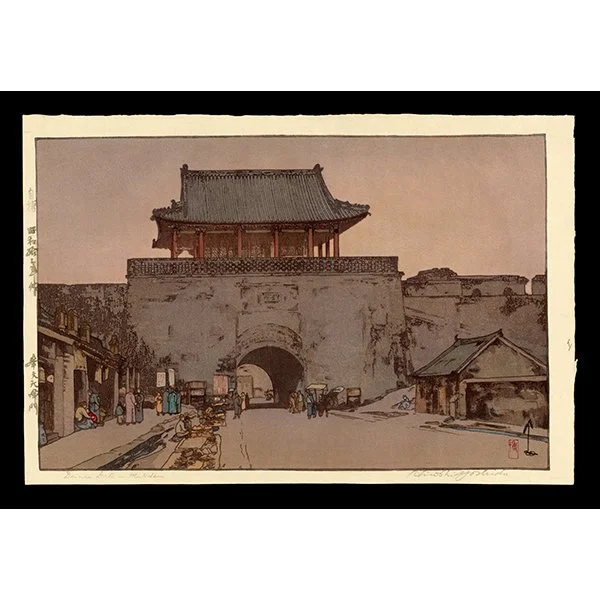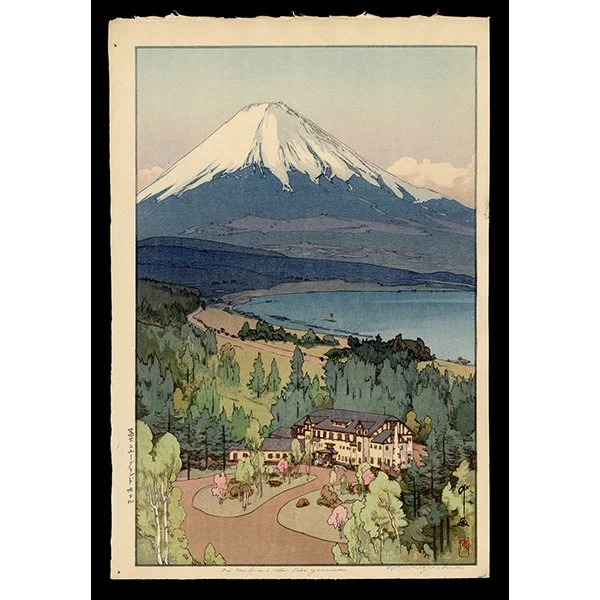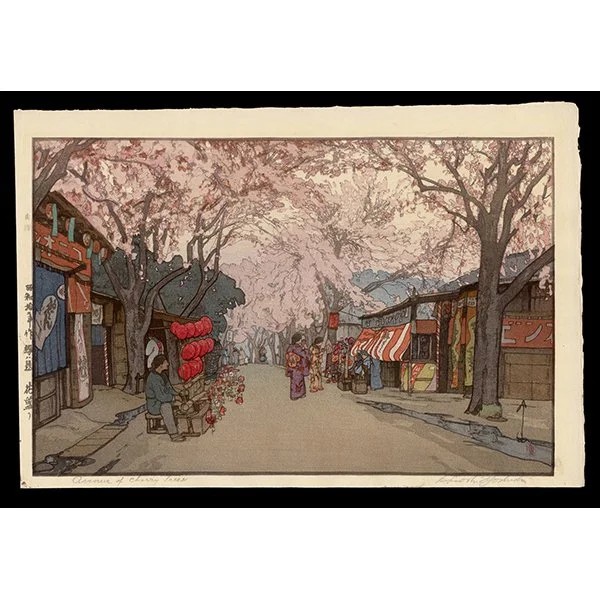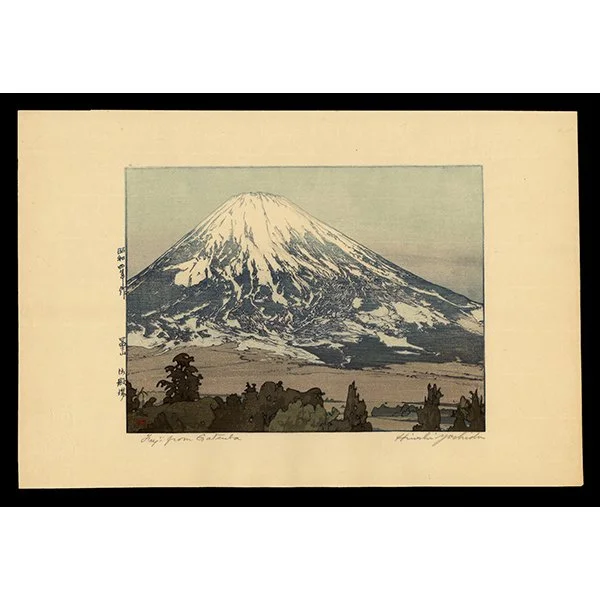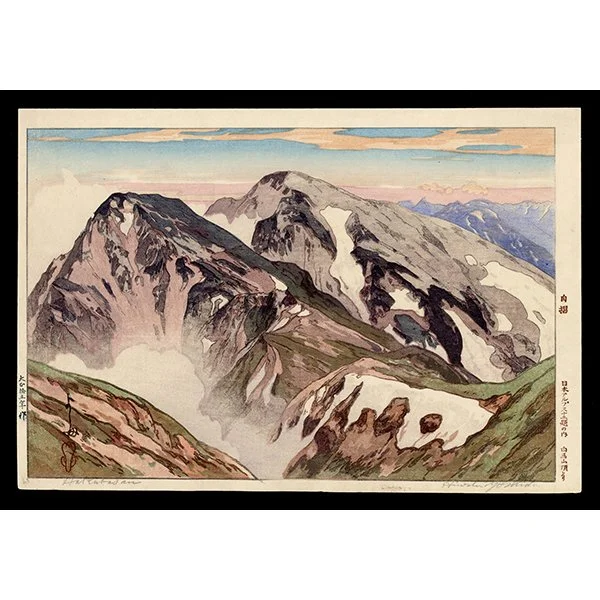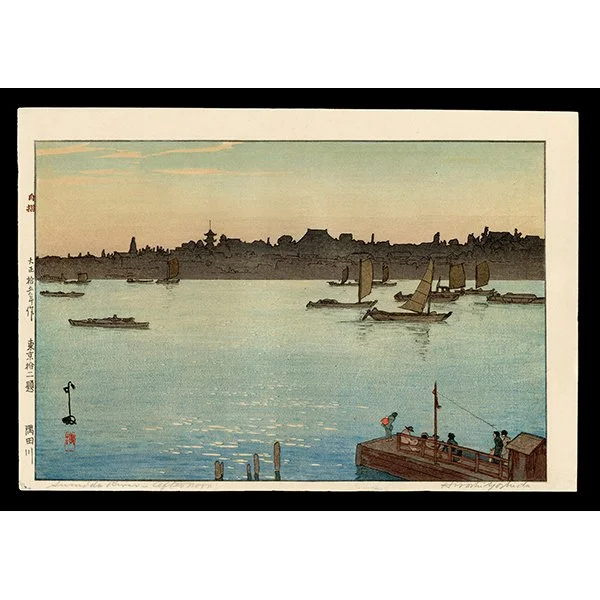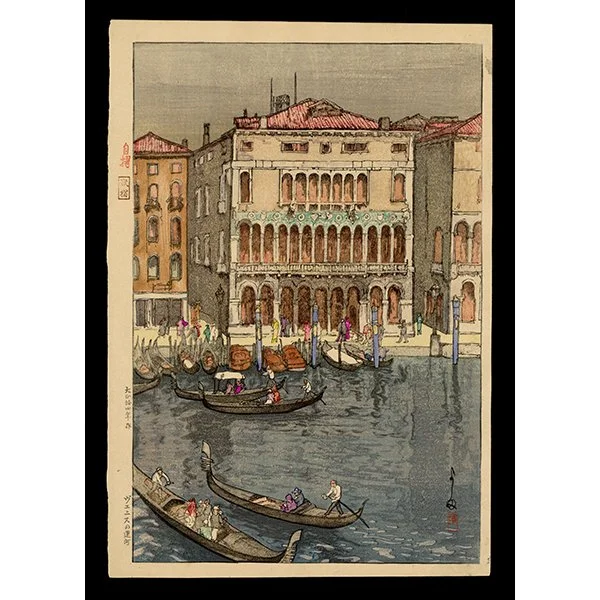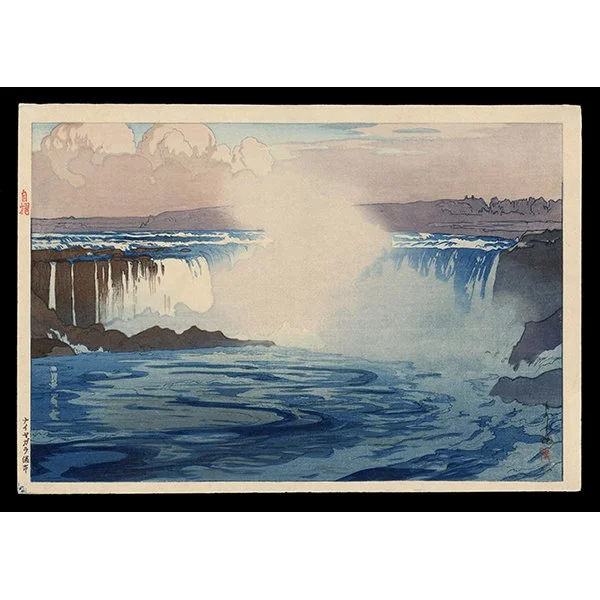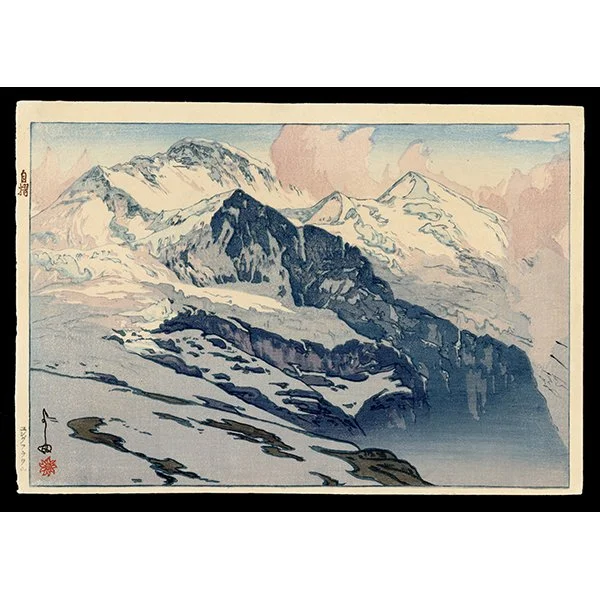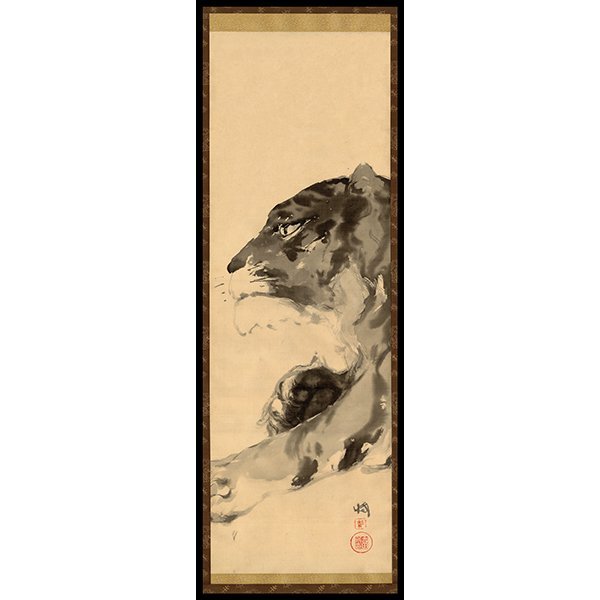Details
Hiroshi Yoshida started his career as an oil and watercolor painter. He traveled to Europe at the onset of his printmaking career to sightsee and to work. An avid outdoorsman and hiker, Yoshida took full advantage of his travels and painted the important natural treasures he visited—all executed in the field, utilizing the plein air painting technique. Yoshida’s nine European series woodblock prints were all conceived on one of his early travels to the Continent and are based on oil or watercolor paintings he produced onsite, which accounts for the strong realism in the designs, a quality rarely encountered in Japanese prints.
Rising majestically from the quaint countryside village, the mountain ascends from a light mist and into the artist’s imagination. Being an avid mountaineer, Yoshida captures this stunning European peak with the vision of an enthusiast hiker. The landscape is rendered in soft and vivid splashes of color, mimicking the spontaneous feeling of oil painting produced out in the field and bringing to mind the countryside paintings of van Gogh. The mountain itself is showcased in stunning realism only Yoshida, an experienced mountaineer, could cite. The contrast between the impressionistic landscape and the atmospheric quality of the mountain’s summit is striking. Yoshida is among only a handful of artists that could achieve this masterful effect in woodblock prints.
Connoisseur's Note
This print is a rarely seen early impression of the design. The print bears an early small brown jizuri seal with a pencil signature, indicating it was produced under Yoshida’s strict supervision. Although not as early as the trial impression, the printing of this work differentiates itself from other known regular-issue impressions, by its brighter coloration and bolder use of bokashi (color gradation) throughout the design.
The work has the spontaneous feeling of an oil painting produced out in the field. This impression is a rare glimpse of the artist at work in the start of his printmaking career. At this time, Yoshida was deliberating on how to best produce prints with the highest artistic quality while hammering out the economic viability of his production methods. The rarity and expressive quality of this early experimental impression are exceptional.
The work has the spontaneous feeling of an oil painting produced out in the field. This trial print required the use of several additional printing blocks, compared to the standard version, to produce the intensity of colors as well as striking contrasting bokashi. This impression is a rare glimpse at the artist at work at the start of his printmaking career when Yoshida was deliberating on how to best produce prints with the highest artistic quality as well as hammering out the economic viability of his production methods. The rarity and expressive quality of this early experimental impression are exceptional.



